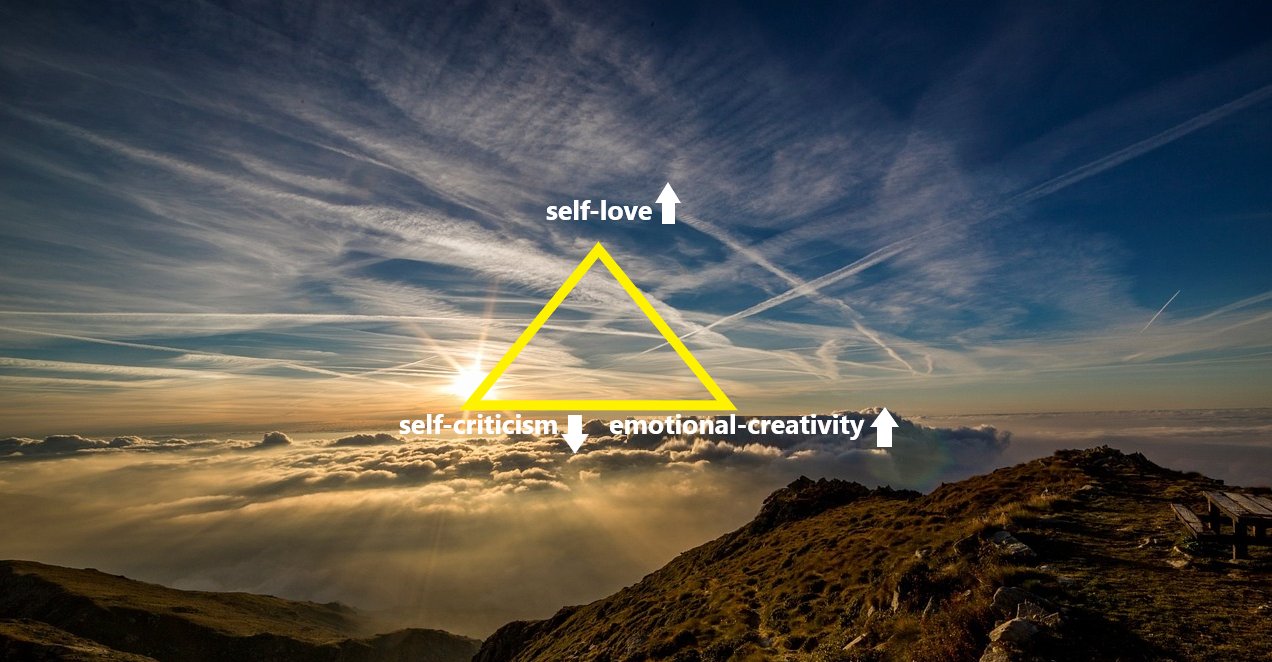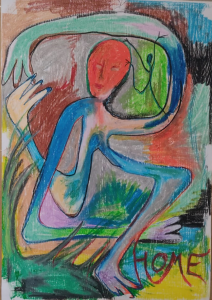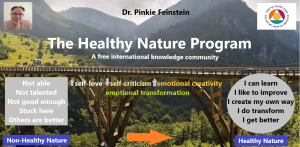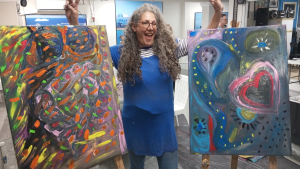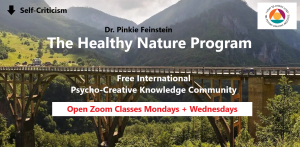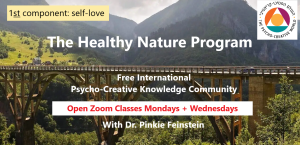The Psycho-Creative Triangle is one of the major bases in the Psycho-Creative theory and practice.
It contains: Increase self-love; decrease self-criticism; increase emotional-creativity.
These three vertices of the triangle represent three main lifetime assignments that are strengthened, practiced, encouraged, and awaken to, through PCC.
Self-love: We all live in a kind of “inner relationship” inside us. The nature of this inner relationship will determine much of the emotional state of mind we experience as well as our abilities to cope with life’s challenges and to feel good with ourselves. This relationship, like all relationships, is in its best level when love flows inside it regularly and with no interruptions. As long as we do not experience love inside us we will never know what love is about. As long as we do not “send” love to ourselves we will not feel love inside us. As long as we don’t recognize love within our breaths we don’t have much love to offer to others. As long as we fail to love ourselves we will remain dependent on love from outer sources.
Practicing self-love, in the eyes of the psycho-creative way, is the highest obligation and the major tool growing a sense of well-being, optimism and the ground for free and independent creativity and authenticity.
Self-Criticism: We all experience some level of inner judgment, inner intolerance, inner doubt, moments of shame or guilt. Many times we do not notice that these forms of self-criticism are exaggerated, out of proportions, twisted and most of all — extremely painful. Our inner critic is like an “inner cop” that doesn’t allow us to make any mistake, to deviate from the consensus, to go on a totally strange adventure, to follow our dreams, to choose new paths, to be “strange.”
Our inner critic creates major blocks in our attempts to create new things saying “it is not good enough” or “come on, you are not that talented in this…”As far as emotional healing is concerned, over-active inner-critic prevents transformative flow, prevents change and development to a new level.
Our job, in the eyes of the psycho-creative way, is to improve our abilities to identify the various faces and appearances of the inner critic and to learn how to reduce our tendency to believe in its messages or to surrender to its demands.
Emotional-Creativity: For the psycho-creative “miracles” to happen and for transformation moments to occur more often we need emotional creativity as a central part of our practice, routine and modes of self-liberation. Emotional-Creativity helps the emotional energy to move to its optimal direction — free-flowing creation. During PCC we use Psycho-Creative exercises to assist in activating the natural emotional-creativity, while referring to the emotional content brought to surface in the session. Emotional-Creativity helps us to make a more coherent and accurate emotional expression and at the same time to reduce the tension stored, daily, in our emotional space.
Intuitive Painting, Intuitive writing, Intuitive dancing are great examples of emotional-creativity, that is probably the main way to let emotions “speak” their real right-brain’s language.
As a rule, all vertices of the triangle influence each other. Self-love decreases self-criticism and enhances emotional-creativity. Self-criticism reduction increases self-love and creative expression. Emotional creativity reduces self-criticism and induces self-love. We also say that if two of the vertices are practiced well enough, they will automatically pull up the third.

